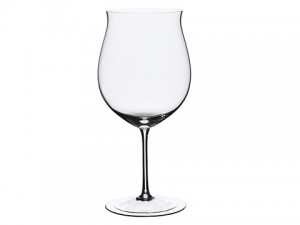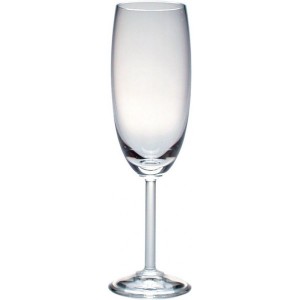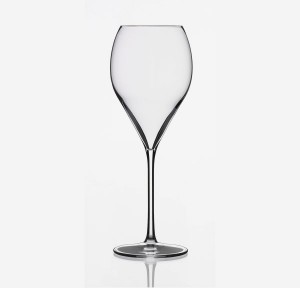Champagne, i produttori “attaccano” i flute: “Non sono i bicchieri adatti per gustarlo”Champagne, producers “attack” the flute: “Those glasses are not suitable for taste it”
Da tanto tempo, ormai, si discute del bicchiere perfetto per lo champagne. Nell’immaginario collettivo, il flute è quello più adatto. Ma dalla Francia, i produttori “attaccano” proprio il bicchiere stretto e lungo. “Ma quale flute? – dicono – Il bicchiere perfetto è quello per il vino bianco, perfetto per apprezzare aroma e gusto dello champagne”.
Insomma, il dibattito è aperto e Anne Krebiehl, master of wine, tra le colonne di Decanter, racconta il punto di vista di alcuni produttori. Maximilian Riedel, Ceo di Riedel, che produce cristallo, non ha dubbi: “I flute sono obsoleti”.
Gli fa eco Jean-Baptiste Lécaillon, enologo di Louis Roederer: “Il nostro champagne ha bisogno di aerazione per dimostrare appieno il suo potenziale – dice -. Ecco perché utilizziamo dei bicchieri speciali a tulipano che ci siamo fatti realizzare 25 anni fa”.
Hugh Davies, Ceo e enologo a Schramsberg Vineyards, uno dei più importanti produttori di vino spumante della California, è d’accordo: “Nel fare i nostri vini spumanti prevediamo un prodotto finito che offra un aroma straordinario – dice -. Nel flute si avrà sicuramente una bella esposizione di effervescenza, ma questo bicchiere può inibire la nostra capacità di esplorare la profondità di aroma e il sapore di quel vino”.
I flute, però, non sono proprio da buttare. Alcuni di questi bicchieri hanno un punto di nucleazione discreto inciso nella loro base interna per creare un costante flusso verticale di bollicine. Conservano l’effervescenza che viene dissipata in altri bicchieri.
Philippe Jamesse, capo sommelier presso Les Crayères a Reims, è schietto: “Ho sempre odiato il flute. A casa ho sempre assaggiato champagne in bicchieri di vino. Ho iniziato presso il ristorante Champenois nel 2000 a servire champagne in flute, tra tanto imbarazzo però, perché sapevo che potevamo fare meglio. Perché è assurdo, quando devi accompagnare piatti di uno chef stellato, non servire champagne al massimo delle sue potenzialità. Poi ho studiato, cercato e trovato il bicchiere che volevo”. Il suo bicchiere, prodotto da Lehmann, è allungato, arrotondato al centro e si assottiglia verso l’alto. Nel punto più largo, misura 88 millimetri. La maggior superficie permette a più bolle di scoppiare simultaneamente mentre i loro aromi vengono catturati all’interno della parte superiore affusolata. “Abbiamo introdotto il bicchiere nel ristorante nel 2008 – racconta Jamesse -. Inizialmente i commensali erano un po’ scioccati, ma una volta che hanno assaggiato, si sono resi conto della differenza”.
Su una cosa sono tutti d’accordo i vigneron de champagne: ogni loro “creazione” ha bisogno di un bicchiere specifico. Sembra impossibile, però, avere decine e decine di bicchieri diversi. Meglio il bicchiere del vino bianco, anche se i flute non sono fuori produzione, come rivela Steve McGraw, amministratore delegato di Riedel: “Produciamo ancora flute perché c’è una domanda che dobbiamo soddisfare, soprattutto da alberghi e ristoranti – dice -. Tuttavia suggeriamo di utilizzare sempre il bicchiere per il vino bianco”.
Anche in Italia i big dei produttori sono d’accordo, come Matteo Lunelli, presidente delle Cantine Ferrari di Trento: “Non credo che i flute siano in grado di fornire il profumo e la complessità di un Doc spumante Trento. Preferisco bicchieri grandi, a tulipano, soprattutto per i vini d’annata o di riserva accompagnati con il cibo. I flute vanno bene per le feste, ma assaggiare, per esempio, un Ferrari Perlé in un grande bicchiere a tulipano, cambia immediatamente l’esperienza”.
Fonte: www.cronachedigusto.it/For a long time, now, discussing the perfect glass for champagne. In the collective imagination, the flute is the most suitable one. But from France, the producers “attacking” the very long and narrow glass. “But what a flute? – They say – the perfect glass is that for white wine, perfect to enjoy aroma and taste of champagne”.
In short, the debate is open and Anne Krebiehl, Master of Wine, between the columns of Decanter, says the point of view of some manufacturers. Maximilian Riedel, CEO of Riedel, who produces crystal, has no doubts: “The flute is obsolete.”It is echoed by Jean-Baptiste Lécaillon, Louis Roederer winemaker: “Our champagne needs aeration to demonstrate its full potential – says -. That’s why we use special glasses tulip that we made realize 25 years ago”.
Hugh Davies, CEO and winemaker at Schramsberg Vineyards, one of the leading producers of sparkling wine in California, agrees: “In making our sparkling wines we expect a finished product that provides an extraordinary aroma – says -. In flute you will surely have a beautiful display of effervescence, but this glass may inhibit our ability to explore the depth of aroma and flavor of the wine”. The flute, however, are not just thrown away. Some of these glasses have a point of nucleation discreet engraved in their internal base to create a constant vertical flow of bubbles. Retain the effervescence that is dissipated in other glasses.
Philippe Jamesse, head sommelier at Les Crayères in Reims, is blunt: “I have always hated the flute. At home I have ever tasted champagne in wine glasses. I started in the restaurant Champenois in 2000 to serve champagne with flute, among much embarrassment though, because I knew we could do better. Because it is absurd, when you have to accompany dishes of a star chef, not serve champagne to its fullest potential. Then I studied, searched and found the glass I wanted”. His glass, produced by Lehmann, is elongated, rounded in the middle and tapers upwards. At its widest point, it measures 88 millimeters. The increased surface allows more bubbles burst simultaneously while their aromas are captured within the upper tapered. “We introduced the glass in the restaurant in 2008 – he tells -. Initially the diners were a bit ‘shocked, but once you have tasted it, they realized the difference”.
On one thing every vigneron de champagne agree: every their “creation” needs a specific glass. It seems impossible, however, to have dozens and dozens of different glasses. Better the glass of white wine, although the flute are not discontinued, as revealed by Steve McGraw, CEO of Riedel: “We produce more flute because there is a question that we must satisfy, especially in hotels and restaurants – says -. However, we suggest that you always use the glass for white wine”.
Even in Italy the big producers agree, as Matthew Lunelli, president of the Ferrari Winery in Trento: “I do not think that the flute are able to provide the aroma and complexity of a sparkling Trento DOC. I prefer large glasses, tulip, especially for vintage wines or reserves accompanied with food. The flutes are good for the holidays, but try, for example, a Ferrari Perlé in a large tulip glass, immediately changes the experience”.
Source: www.cronachedigusto.it/








Leave a comment